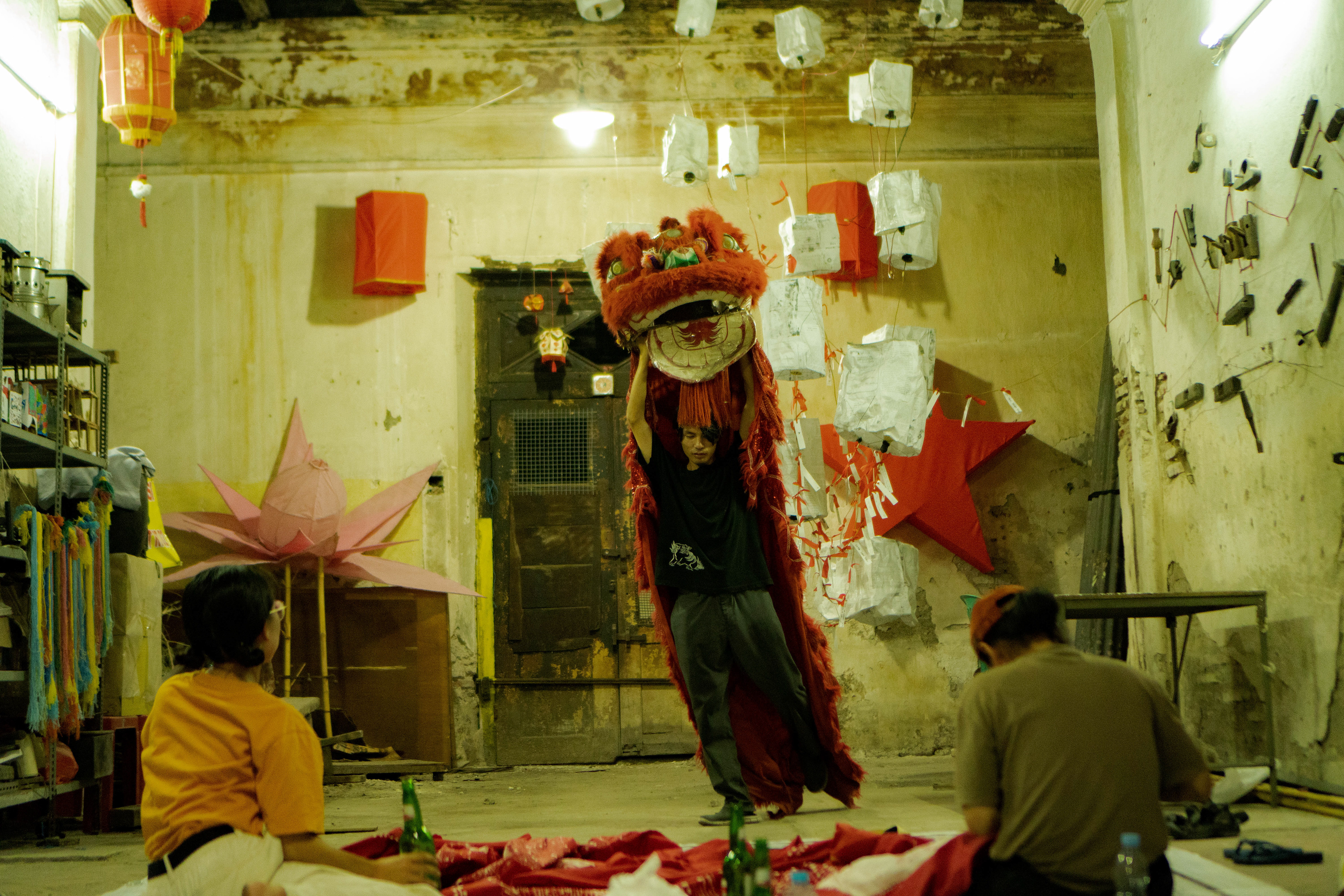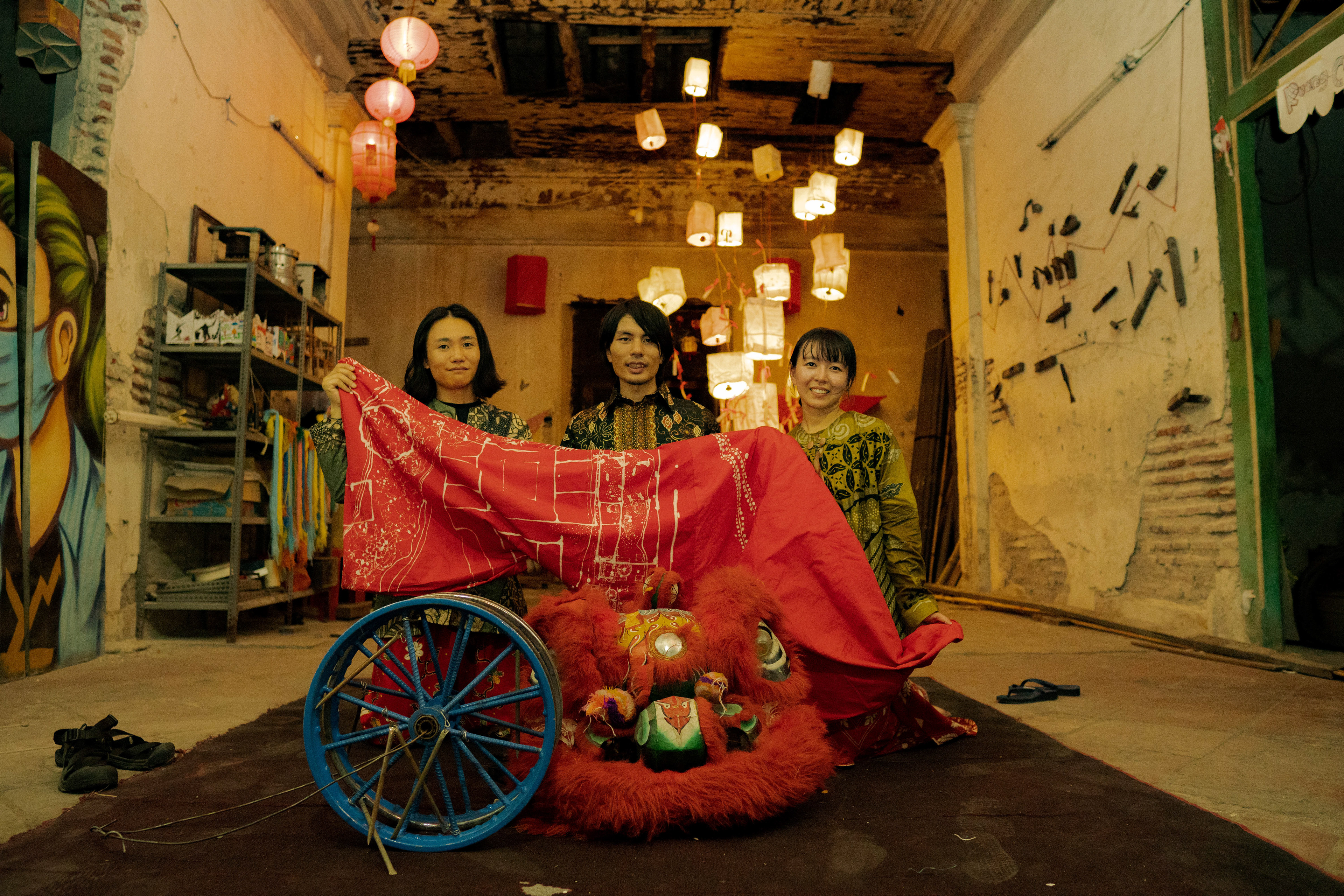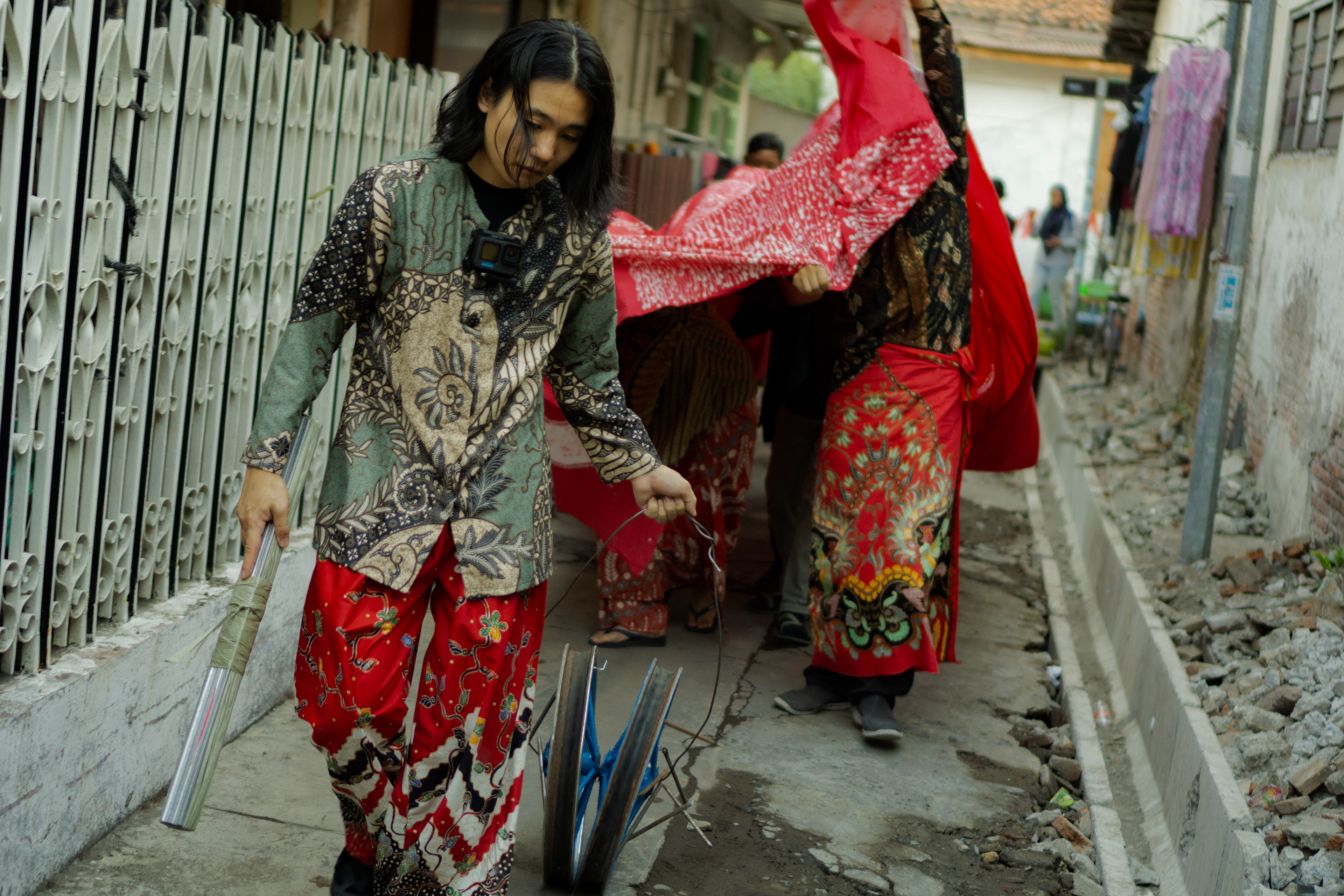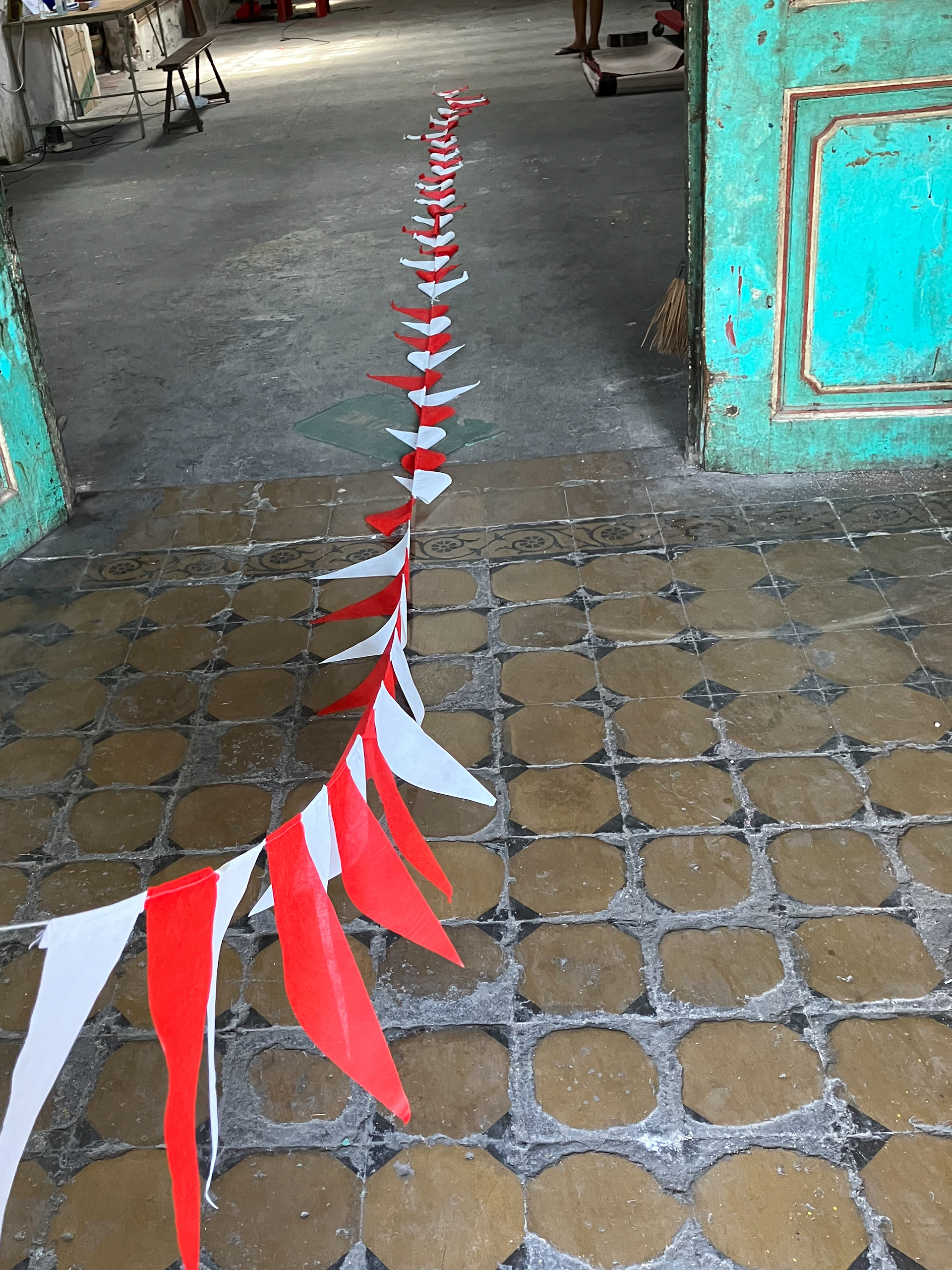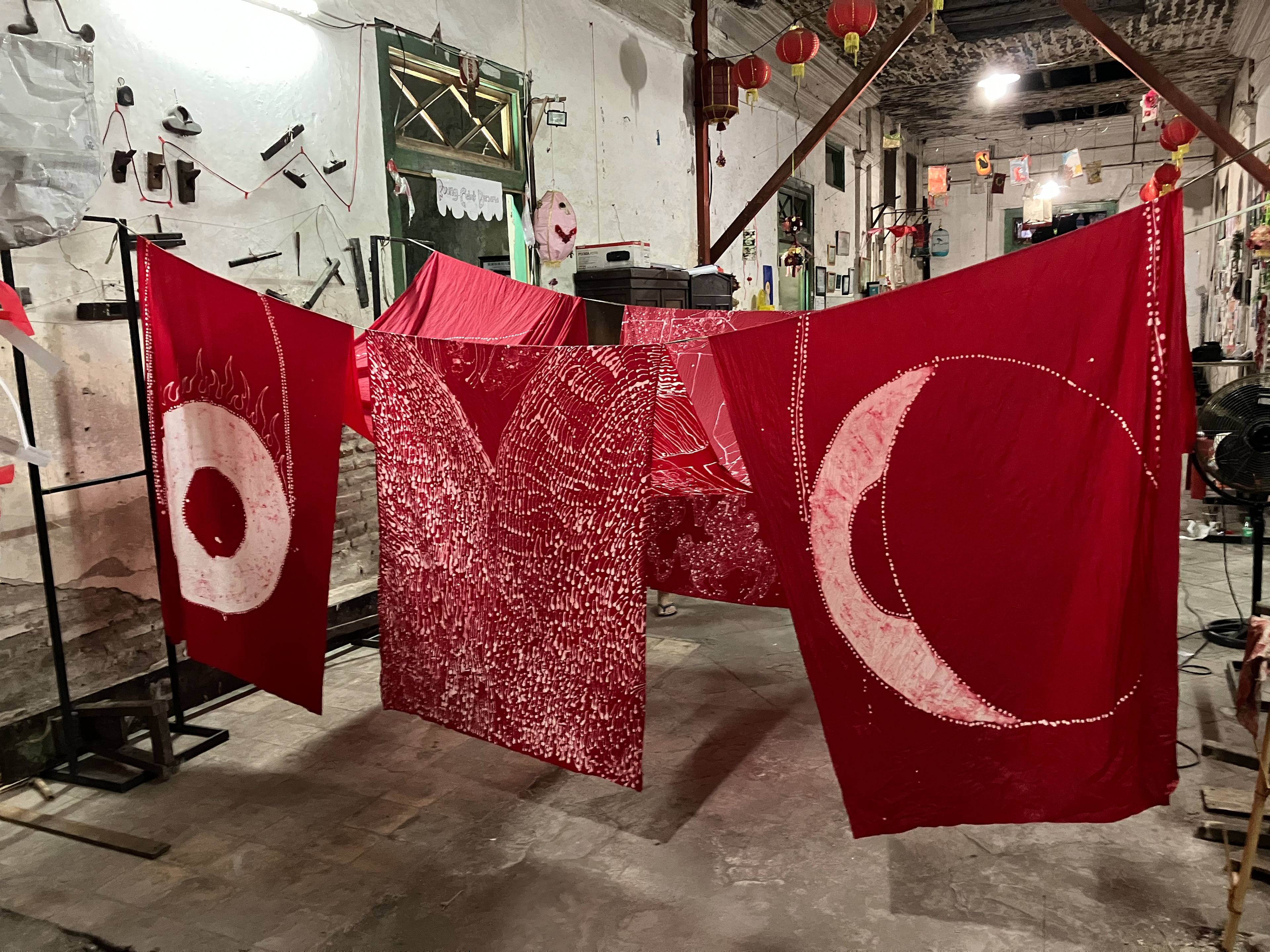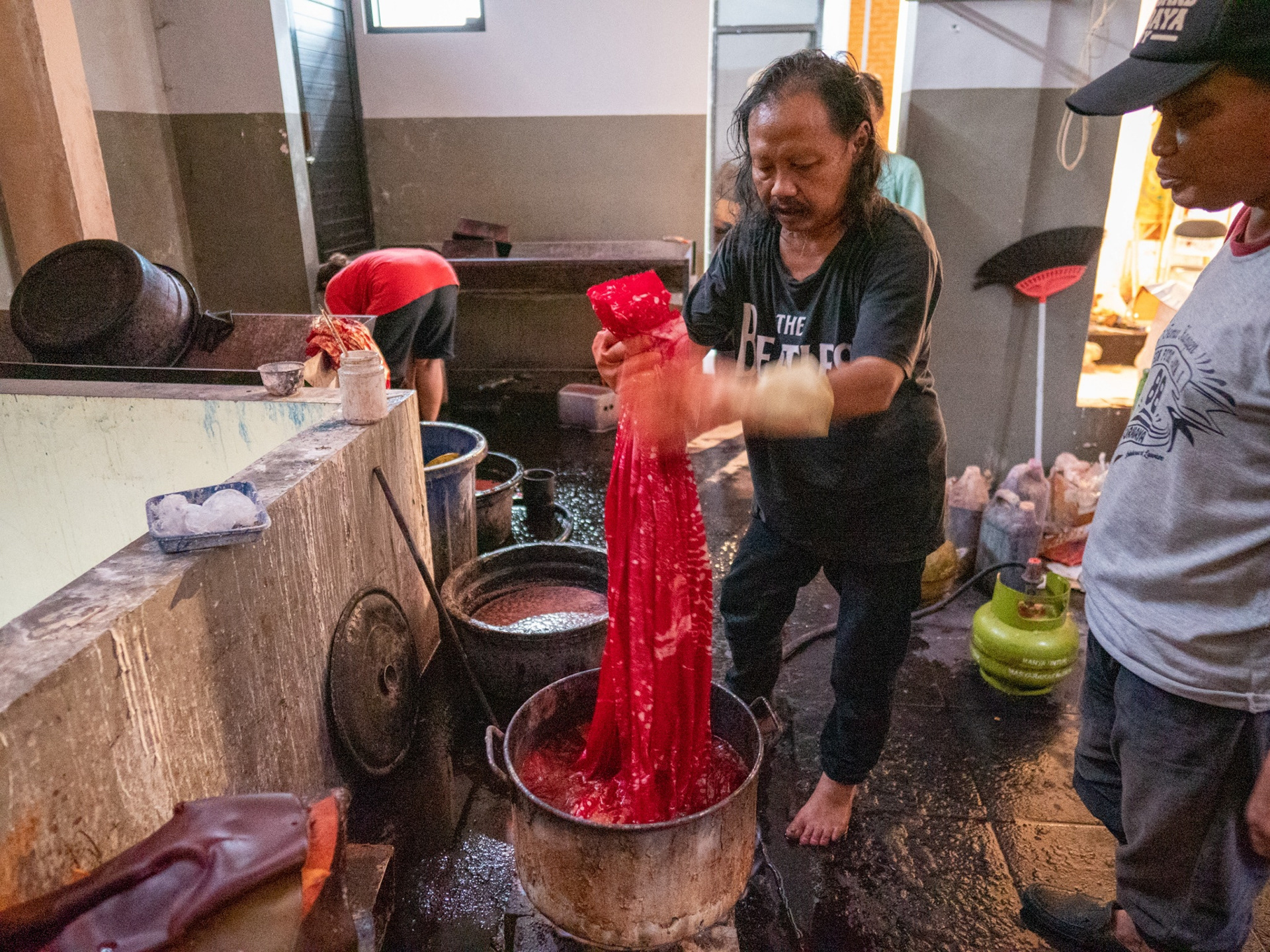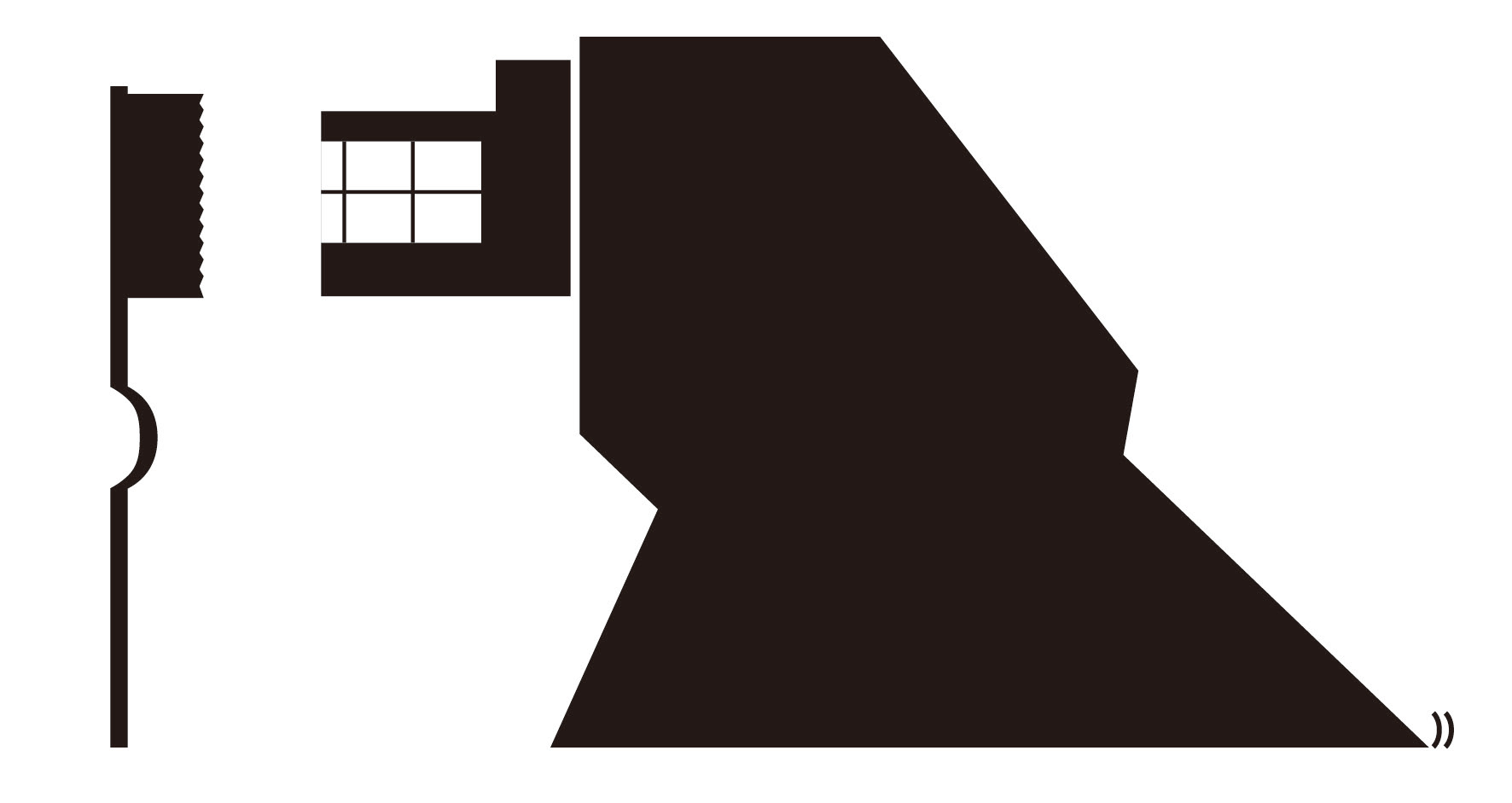インドネシア スラバヤ タンバックバヤン
Tambak Bayan, Surabaya, Indonesia
2023年10月9日から22日まで、インドネシア第二の都市・スラバヤに滞在。東ジャワビエンナーレ招待作家として、土地のリサーチ、シシの制作、演舞を実施した。滞在したTambak Bayanはスラバヤの中心部にあり、中国の広東省からの難民によって形成された歴史があるカンポン(kampung / 「原住民の村」の意)だ。40世帯が暮らすこのコミュニティは100年以上の月日が経ち、その建物の老朽化もあって、取り壊しの話し合いが何度もされてきた。ホテル建設会社が土地を買い、立ち退きを要求しているという。住民の中には住み続けたいという人と引っ越して良いという人がいるらしいが、「引っ越すとしても皆で引っ越したい」という。仲間であり、大きな家族のようだ。毎日のように大きな家「Big House」に人が集い、焼酎やウイスキーなどのお酒を酌み交わしながら思い思いの時を過ごしている。
シシ制作の最初の発想は、バティックのろうけつ染めで布を染めることだった。この布が獅子頭になった。描かれた図案が意味するものは、まず真ん中にシシのタテガミがあり、このテクスチャーはTambak BayanのBighouseの天井の老朽化した模様を取り入れたものである。またその下にTambak Bayanの俯瞰図があり、それを覆うように、地底を這うような生物を描いた。その模様は生活必需品である食料品や家具などでかなり細かい造形となった。その先端はまるで龍のようである。
また、この布を中心として、右側には大きく見開いた目、左側には眠そうに半分閉じている目を描いた。これはそれぞれ太陽と月のモチーフであり、善と悪が永遠に循環していくとするインドネシアの人々の精神性あるいは芸能の根底を流れる考え方を模したものでもある。この3つの布はミシンの糸でつなぎ合わされた。住民の協力のもと1時間半にわたる格闘の末、ミシンの機械が使えるようになったのは良き思い出だ。この布の色は赤に白い模様が入っており、中国やインドネシア国旗、あるいはBig houseのランタンなどのモチーフから、創造された色である。
そのほかにもシシに使われたアイテムはこのようなモノがあった。
・バティック染めの布(獅子頭)5m
・メンバー3名が着るバティックの衣装
・紅白旗100m
・古いバロンサイの頭
・車輪の楽器
・自作のマラカス
10月21日16時半より演舞を行なった。獅子の歯ブラシのメンバー3人だけではなく、シシの演舞にどんどんと住民が参画し、100名以上の人が連なった。過去の制作の中で最も大きなシシになったと言える。自分の手を離れたところにいる他者が介入して、それで成立するシシだった。人と人との距離が近い、インドネシア、そしてスラバヤの特質をよく表したシシが誕生した。このシシが逆に住民に何かの作用をもたらしたこともまた事実だろう。
実際にインドネシア・スラバヤのTambak Bayanという地域コミュニティを対象にシシを作ってみて、とにかく住民が新しい生き物の誕生を歓迎し、自らそれに進んで参加してくれたのは印象的だった。実際に演舞時間は過去でも最短の30分ほどだった。インドネシアの暑さにやられて、コミュニティを1周するくらいしか体力が残っていなかった。それでも、その限られた時間がぎゅっと濃いものになった。
Stayed in Surabaya, Indonesia's second largest city, from October 9th to 22nd, 2023. As an invited artist at the East Java Biennale, he researched the land, created a shishi, and performed a dance. Tambak Bayan, where I stayed, is located in the center of Surabaya and is a kampung (meaning ``native village'') that was founded by refugees from China's Guangdong province. This community, where 40 families live, is more than 100 years old, and due to the aging of its buildings, there have been many discussions about demolition. A hotel construction company reportedly bought the land and is demanding eviction. It seems that some residents want to continue living there, while others are willing to move, but ``if we were to move, we would all like to move.'' They are friends and like a big family. Almost every day, people gather in the big house, ``Big House'', and spend their time enjoying drinks such as shochu and whiskey.
The initial idea for making shishi was to dye cloth with batik batik. This cloth became a lion's head. What the drawn design means is that there is a shish mane in the center, and the texture is inspired by the dilapidated pattern on the ceiling of the Bighouse in Tambak Bayan. Below that is a bird's-eye view of Tambak Bayan, and over it, I drew creatures that look like they are crawling underground. The patterns became quite detailed in everyday necessities such as food and furniture. Its tip resembles a dragon.
Also, with this cloth as the center, the artist depicted wide-open eyes on the right side and sleepy, half-closed eyes on the left side. These are the motifs of the sun and the moon, respectively, and they also represent the Indonesian people's spirituality or the idea that good and evil are eternally cyclical, which underlies the Indonesian performing arts. These three pieces of cloth were joined together with a sewing machine thread. I have fond memories of being able to use the sewing machine after an hour and a half of struggle with the help of the local residents. The color of the cloth is red with a white pattern, a color created from motifs such as the Chinese and Indonesian flags and the lanterns of the Big House.
Other items used for the shishi were as follows.
Batik-dyed cloth (lion's head) 5m long
Batik costumes worn by three members
100 meters of red and white flags
An old barong rhino head
Musical instrument on wheels
Maracas made by the members themselves
Batik-dyed cloth (lion's head) 5m long
Batik costumes worn by three members
100 meters of red and white flags
An old barong rhino head
Musical instrument on wheels
Maracas made by the members themselves
The performance was held on October 21 at 4:30 pm. Not only the three members of Lion's Toothbrush, but also more and more residents participated in the performance of the deer, and more than 100 people joined in the performance. I can say that this was the biggest shishi ever produced in the past. It was a Sisii that was made possible by the intervention of others who were out of one's control. The result is a deer that expresses the characteristics of Indonesia and Surabaya, where people are very close to each other. It is also true that this Sisii had some effect on the residents.
In fact, when we created the Sisii for the community of Tambak Bayan in Surabaya, Indonesia, it was impressive to see how the residents welcomed the birth of a new creature and willingly participated in it. The actual performance time was one of the shortest ever, about 30 minutes. The Indonesian heat had taken its toll, and I only had enough energy left to make one lap around the community. Even so, the limited time we had was intense.
camera : Dimas Anugerah

